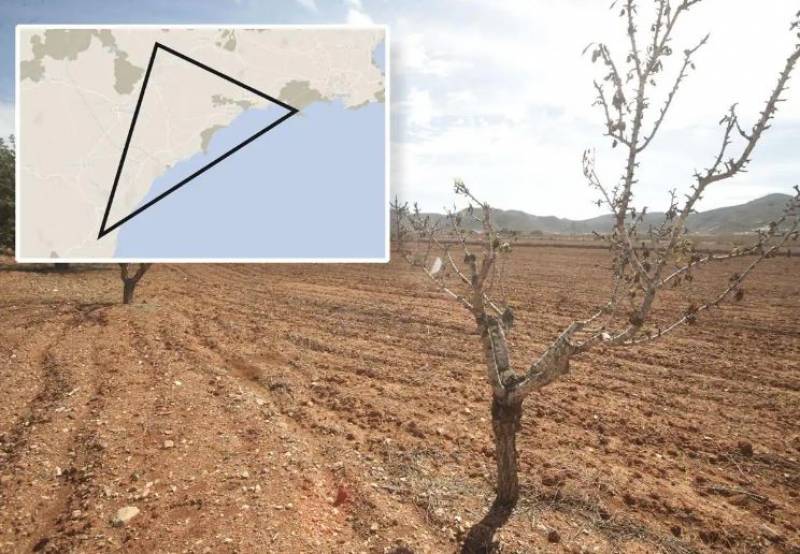Date Published: 11/03/2024
Rain-free corner of Murcia named the driest spot in Europe
Cartagena, Lorca and Águilas have experienced the least amount of rainfall in the last five months

A severe and prolonged drought has gripped the southeast of Spain, particularly affecting the provinces of Murcia and Almería. And there’s one corner in the south of the Region of Murcia, stretching from Cabo Tiñoso all the way across to the border with Almería, passing through Lorca and Águilas, which has just been given the dubious honour of becoming the driest area not only in Spain, but in the entire European continent.
This area has experienced the least amount of rainfall, by far, over the past five months. The hydrological year began in October 2023 and has been marked by extreme weather patterns, according to Víctor Ruiz Álvarez, a geography professor at the University of Sevilla. He explained that the Region has been experiencing a rollercoaster of extreme rainfall and dry spells since the spring of 2022.
The main cause of the drought is the prevailing west winds, which have brought little rain to the Region due to the blocking force of the Baetic mountain range. This has resulted in a significant decrease in rainfall in certain areas, such as the triangle formed by Sierra de Cabrera, Guadalentín and Cabo Tiñoso in Cartagena.
Arroyo Frío, in Jaén, has received the most rainfall locally, with 751 litres per square metre falling since October. However, just 120 kilometres away, Pozo de la Higuera in Lorca has been doused by just 4.9 litres, making it one of the driest places in Europe.
Other nearby areas, such as El Portús, Águilas and Pulpí, have also experienced extremely low levels of rainfall. That’s because coastal and pre-coastal mountain systems in the Region, including the Almenara and Moreras mountain ranges, have created a barrier that prevents storms from reaching these parts, resulting in even drier conditions.
Today, the most affected areas are Campo de Cartagena and Valle del Guadalentín.
Mr Ruiz Álvarez warns that global warming is causing an increase in the frequency of dry spells in the region, with the wettest periods becoming shorter and more intense. The current period of lack of rain is not yet the driest the Region has ever known, but it is the start of the driest hydrological year in the basin of the Segura River since records began.
The longest and most intense period of drought in the Region of Murcia occurred between October 2013 and November 2016, and experts fear that the current drought could become equally severe. To mitigate the situation, a pocket of cold air in the form of DANA, which can bring precipitation to the area, would be necessary.
Residents and farmers in the Region are, of course, feeling the effects of the drought. Parched fields are producing smaller and smaller harvests, pushing prices up and agricultural workers to breaking point.
As a result, the regional government has implemented measures to reduce water consumption and is urging home owners and visitors to conserve water.
“The next few months will determine the magnitude of this drought, especially due to the behaviour of spring, which we hope will be wet as in recent years,” the scientist concluded.
Find all the latest weather and climate change news here or join our Murcia Weather Watch Facebook group for regular updates
Image: FrostSE
Loading
See more environmental news about Spain:
OR
Sign up for the Spanish News Today Editors Roundup Weekly Bulletin to get a comprehensive email with all the week’s news for Spain, Murcia, Alicante and Andalucía.
Get a sneak peek – here are a few of our recent Subscription Bulletins:
Discount Special Offer subscription:
36.95€ for 48 Editor’s Weekly News Roundup bulletins!
Please CLICK THE BUTTON to subscribe.
Contact Spanish News Today: Editorial 966 260 896 /
Office 968 018 268






























